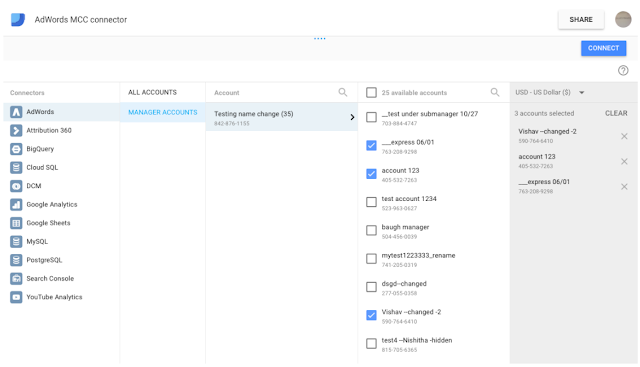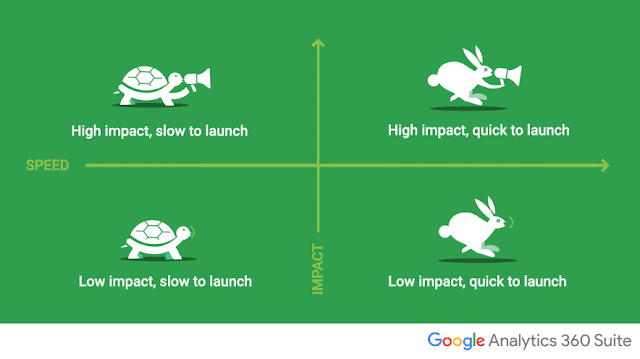Marketing and Measurement have been flirting for a long time now. But if these two finally get past the awkward stage and form a lasting bond, beautiful things can happen.
Working together, Marketing and Measurement can uncover insights that will improve your marketing, your customer experiences, and ultimately your business. To reach that next relationship level, Marketing can’t just casually date Measurement when it’s convenient. They need a real commitment.
The secret to a strong relationship
“For growth-driven marketers, measurement isn't an afterthought. It's one of the key reasons they’re succeeding and growing in an ever-changing, mobile-first world,” said Matt Lawson, Google's Director of Performance Ads Marketing.
When Marketing and Measurement “put a ring on it,” the future looks bright. Leading marketers are 75% more likely than the mainstream to have moved to a more holistic model of measurement in the last two years, according to a recent study from Econsultancy and Google. What’s more, the same study shows leading marketers were more than twice as likely to have significantly exceeded their top business goal in 2015.2
Don’t expect ‘happily ever after’
Engagement isn't where the story ends, of course.
Along the way, Marketing and Measurement may experience setbacks or failures as they test and learn from each other. In a recent survey of marketing decision makers with analytics initiatives, 61% of respondents said they struggled to access or integrate the data they needed last year.3
As with any relationship, Marketing and Measurement will need to “work on it.” And as this love story evolves, they will need to let go of traditional measurement practices and embrace a growth mindset that rethinks and remakes marketing measurement for the future.
If Marketing and Measurement are ready for a serious commitment at your company, here are three keys to a successful partnership:
1,2 Econsultancy and Google, Analytics and Measurement Survey, 2016, Base: n=500 marketing and measurement executives at North American companies with over $250MM in revenues
3 Google Surveys, U.S., "2016–2017 Marketing Analytics Challenges and Goals," Base: 203, marketing executives who have analytics or data-driven initiatives, Dec. 2016.
Working together, Marketing and Measurement can uncover insights that will improve your marketing, your customer experiences, and ultimately your business. To reach that next relationship level, Marketing can’t just casually date Measurement when it’s convenient. They need a real commitment.
The secret to a strong relationship
“For growth-driven marketers, measurement isn't an afterthought. It's one of the key reasons they’re succeeding and growing in an ever-changing, mobile-first world,” said Matt Lawson, Google's Director of Performance Ads Marketing.
Leading marketers are 75% more likely than the mainstream to have moved to a more holistic model of measurement in the last two years.1
When Marketing and Measurement “put a ring on it,” the future looks bright. Leading marketers are 75% more likely than the mainstream to have moved to a more holistic model of measurement in the last two years, according to a recent study from Econsultancy and Google. What’s more, the same study shows leading marketers were more than twice as likely to have significantly exceeded their top business goal in 2015.2
Don’t expect ‘happily ever after’
Engagement isn't where the story ends, of course.
Along the way, Marketing and Measurement may experience setbacks or failures as they test and learn from each other. In a recent survey of marketing decision makers with analytics initiatives, 61% of respondents said they struggled to access or integrate the data they needed last year.3
As with any relationship, Marketing and Measurement will need to “work on it.” And as this love story evolves, they will need to let go of traditional measurement practices and embrace a growth mindset that rethinks and remakes marketing measurement for the future.
If Marketing and Measurement are ready for a serious commitment at your company, here are three keys to a successful partnership:
- Collaborate to identify and measure what really matters to your business
- Communicate key insights uncovered from your data to help support decision making
- Take action to ensure those insights lead to better customer experiences
Download “Driving growth with marketing measurement in a mobile world,” a new report from Econsultancy and Google, for more best practices for marketing leaders.
1,2 Econsultancy and Google, Analytics and Measurement Survey, 2016, Base: n=500 marketing and measurement executives at North American companies with over $250MM in revenues
3 Google Surveys, U.S., "2016–2017 Marketing Analytics Challenges and Goals," Base: 203, marketing executives who have analytics or data-driven initiatives, Dec. 2016.












